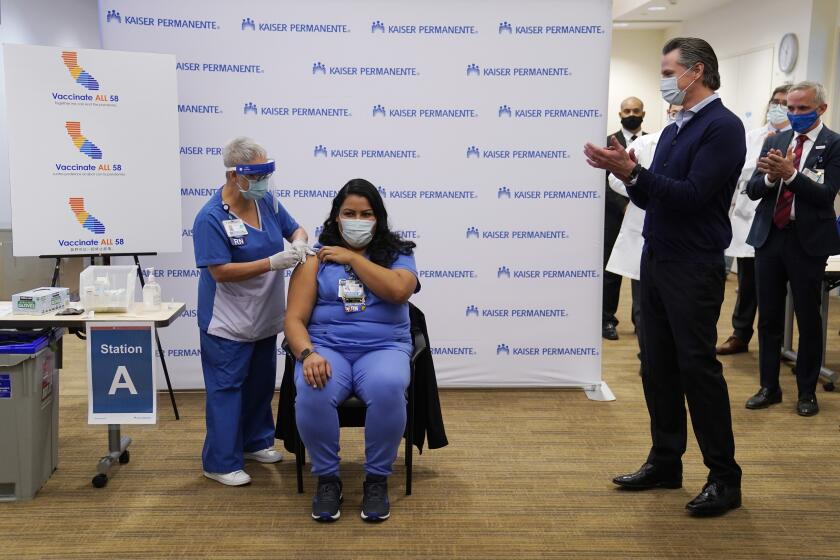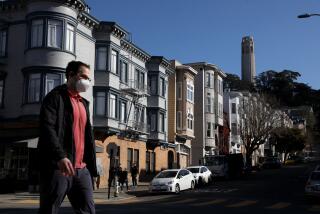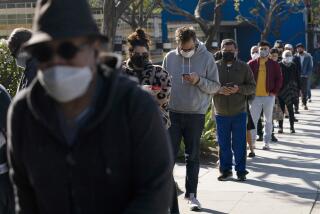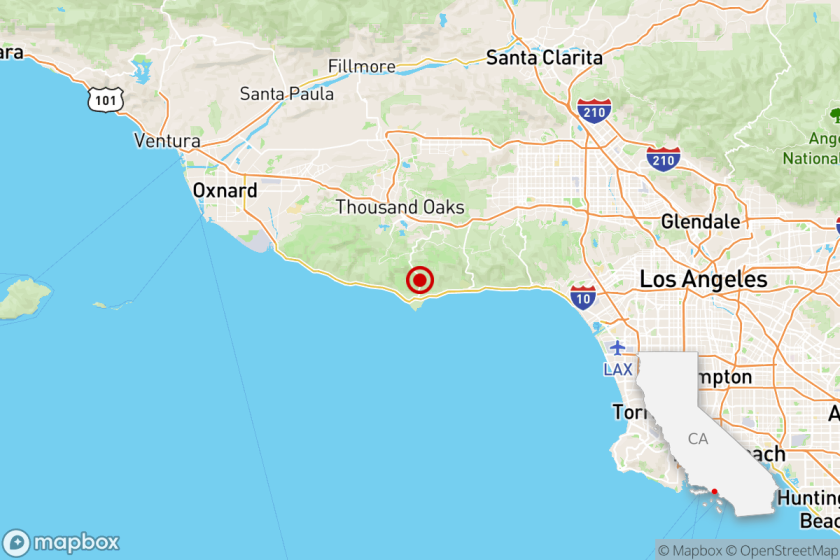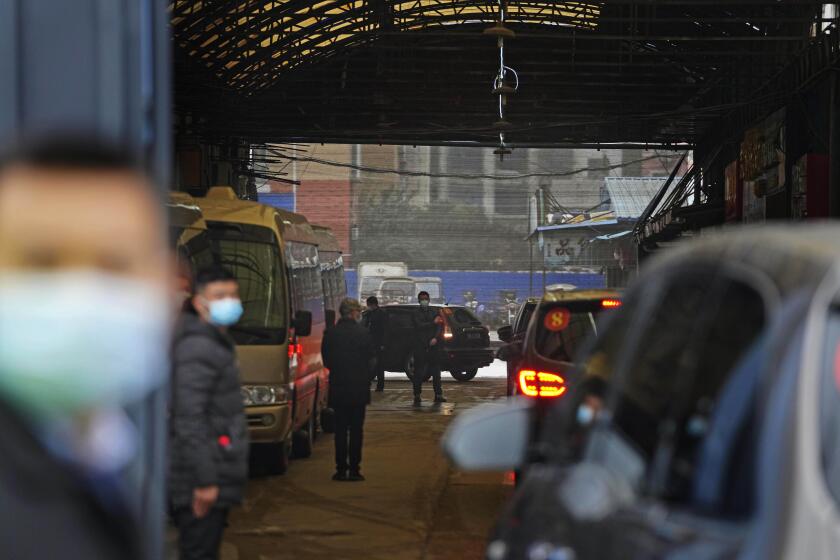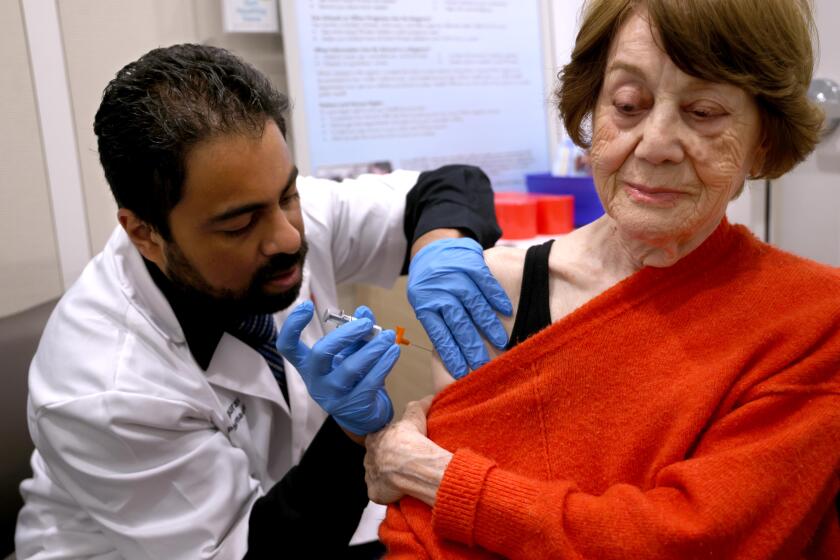Inland Empire now California coronavirus hot zone even as its leaders battle safety restrictions
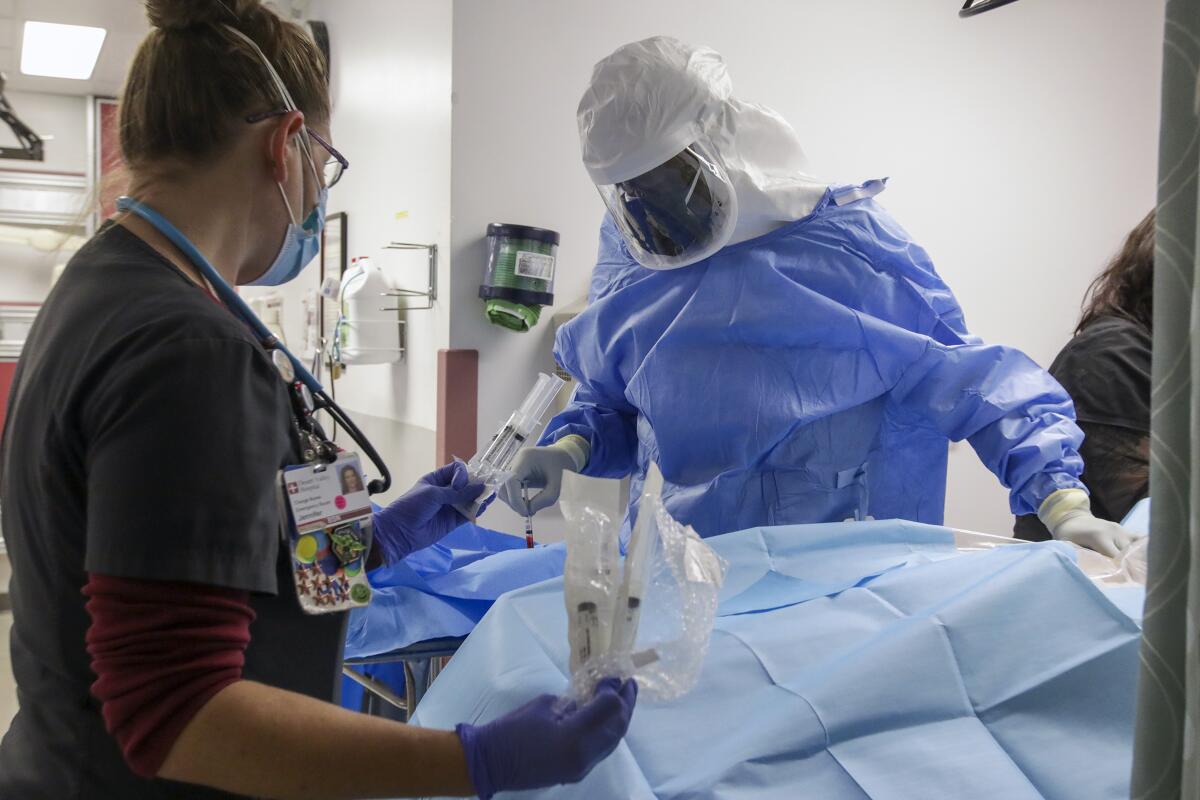
Two makeshift hospital rooms sit outside the ambulance entrance to Arrowhead Medical Center in San Bernardino County, a hint of how dire things have become as the county faces a surge of COVID-19 cases.
Things have gotten so bad at times that paramedics and ambulance drivers have had to wait up to six hours to offload COVID-19 patients, many of them often struggling to breathe.
“We had patients who were taking 40 to 50 breaths per minute. The average is 20,” said Dr. Joel Labha, who has taken care many of those patients.
Hospitals across California are being overwhelmed by the coronavirus surge, but the conditions in San Bernardino County and the Greater Inland Empire are particularly acute. New cases of the coronavirus in San Bernardino County are growing faster than in any other county in California on a per capita basis, according to The Times’ tracker.
Over the last seven days, there were about 1,800 coronavirus cases for every 100,000 residents in San Bernardino County. By contrast, hard-hit Los Angeles County reported about 1,000 cases per 100,000 residents during that period.
A Los Angeles Times analysis of coronavirus case rates in communities for which data are available found that, of the top 50, about half of them were in the Inland Empire, including Riverside, San Bernardino, Perris, Moreno Valley, Jurupa Valley, Bloomington, Barstow, Colton, Rialto, Victorville, Fontana, Highland, Adelanto and Hesperia.
Experts and public health officials say there are several factors that have made San Bernardino County so vulnerable to the spread of the coronavirus. Like Los Angeles County, San Bernardino is home to many essential workers and some dense working-class Latino communities where the virus has spread. Data show poorer, more non-white parts of the Inland Empire are among the areas being disproportionately hit hard.
But San Bernardino County has also been more resistant to state mandates than L.A., with officials clashing with Gov. Gavin Newsom over the latest stay-at-home order.
Edward Flores, sociology professor with the UC Merced Community and Labor Center, said the Inland Empire was one of the nation’s hubs for the logistics industry, with Amazon and many other companies operating vast warehouses in the region. The warehouse boom has played out for more than a decade, and the pandemic has made shipping more vital to the economy than ever.
“These are critical, essential industries in which workers commonly work in close proximity to each other, and so, it’s easy for the virus to spread,” Flores said. “And especially now during the holiday season, when everybody is staying at home and buying packages online ... it wouldn’t be surprising if all of that activity is contributing to the spread.”
Google mobility data also suggests that visits to retail sites in the Inland Empire have fallen by only about 20% compared to a baseline, a smaller drop compared to L.A., Orange and San Diego counties, where such visits have fallen by about 30%.
San Bernardino County leaders have repeatedly pushed back against rules advanced to stymie the spread of the coronavirus, and the latest surge arrived just days after the county asked the California Supreme Court to overturn Newsom’s stay-at-home order.
County Supervisor Curt Hagman, a leading voice in the lawsuit against Newsom, stood by the decision Wednesday.
“I respect what [Newsom] is trying to do with some of these orders, but I think that the state of California is too big for one-size-fits-all solutions,” said Hagman, who is also chair of the board.
He said basing shut-down decisions on one metric only — intensive care unit capacity — was the wrong approach, and argued that although county officials wanted people to avoid risky behavior, those decisions should be made on local and regional levels.
California becomes first state to surpass 2 million coronavirus cases
“There’s going to be different solutions for different areas,” he said.
But some experts say the county’s resistance has a cost.
“If someone is seeing their local leadership saying the rules don’t make sense, then they might feel as if they don’t need to follow the rules,” Shira Shafir, an associate professor of epidemiology at the UCLA Fielding School of Public Health, said Wednesday.
San Bernardino County is hardly unique when it comes to occasionally standing apart from the state. Its neighbors in Riverside and Orange counties have also periodically pushed back against restrictions and rules handed down from Sacramento.
Richard Carpiano, a professor of public policy and sociology at UC Riverside, said local attitudes about the coronavirus are formed through a national lens: “We in the U.S. think in very individualistic terms: It’s our bodies and our choices,” he said.
People look to leaders for what to do, Carpiano said, so their actions can influence behavior.
Whatever the cause, public health officials said San Bernardino has reached a crisis point.
“It’s just surging all around us in our county, and that’s why we’re so deeply concerned,” county Public Health Director Corwin Porter said Wednesday. “It hasn’t peaked yet. It hasn’t stopped increasing.”
California’s community vaccine advisory committee is still hashing out its next phase for vaccine distribution prioritization.
He said there is no single sector that is driving the dire situation in San Bernardino.
“It’s like throwing a pebble in a pond,” Porter said of the surge, which began shortly after Thanksgiving. “It’s been broadening out ever since.”
There is, however, a hierarchy: Small gatherings among family and friends are “by far” the driving factor, he said, followed by religious gatherings, funerals, out-of-county travel, weddings, work and restaurants. Schools, which remain mostly closed to in-person classes, are lower down the list.
One area that has been particularly hard hit is Bloomington — a small, unincorporated community outside Fontana. According to Times data, it has the highest community-level case rate in the county by far.
Porter attributed Bloomington’s spike to the fact that the area is home to many essential workers, as well as multi-family, multi-generational homes and concentrations of nonwhite populations, all of which have suffered disproportionately since the start of the pandemic.
According to census data, 83% of Bloomington’s population is Latino, a number 1.5 times higher than the surrounding metro area. Nearly 20% live below the poverty line.
It’s a pattern that is beginning to be reflected among many COVID-19 patients in the county, said Dr. Timothy Jenkins, medical director and chief of staff for Kaiser Permanente’s San Bernardino County service area. He noted that social determinants of health — including food security, housing security, lower income levels and poverty — are challenges that can contribute to spread.
“I think that is directly tied to the severity of the pandemic in the county,” Jenkins said. “In general, some of the other surrounding counties may have less of those factors, and so overall those communities do better.”
Infection control officer Dr. Edward Blews III, also of Kaiser Permanente’s San Bernardino County service area, echoed Jenkins’ findings, noting that regional data show higher incidence of the virus in Latino and Black patients, obese patients and patients who are essential workers.
“Individuals who are living paycheck to paycheck have to go to work,” Blews said, “and so there’s an increased risk of exposure.”
Kaiser’s area hospitals have been setting records for COVID-19 patient numbers “virtually every day,” Jenkins said, and what they are experiencing now is far worse than the numbers they saw over the summer. Thousands of new patients are entering the system every week, and hundreds are already there.
“It really is just one patient after the next with COVID, with just enormous amounts of equipment,” he said. “It really just creates a sense of disaster.”
Yet the messaging coming from county leadership can be confusing and frustrating for those hardest hit by the surge.
Jenkins emphasized the importance of following social distancing guidelines, avoiding unnecessary travel and group gatherings, and wearing face masks. Blews said he hopes people will be willing to get the vaccine as soon as it’s available to them.
But Porter, the county health director, said he’s now worried that holiday gatherings and increased travel will add to an already “scary situation” in the county.
“COVID fatigue has set in,” he said. “I’m not sure if everyone’s listening anymore.”
Back at Arrowhead Regional Medical Center, doctors and nurses hope people are still listening.
Hospital staff say they are worn out. They are sometimes working past their 12-hour shifts, and some come in just to help colleagues get a break for lunch. Sometimes when things get bad, they take on extra patients.
“It feels overwhelming at times,” Labha said. “But we do the best we can. It’s all part of that team effort.”
Times staff writers Matt Stiles and Sean Greene contributed to this report.
More to Read
Sign up for Essential California
The most important California stories and recommendations in your inbox every morning.
You may occasionally receive promotional content from the Los Angeles Times.

